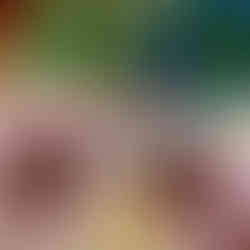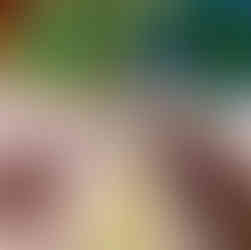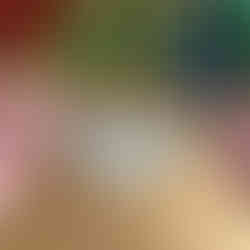Working a garter ridge tab to cast on a top down triangle shawl is kinda magic! It allows us to begin our shawl in such a way that the garter ridge boarder continues seamlessly (or pretty darn close to seamlessly) along the top of our shawl.
This Blog post will take you through the steps of creating a garter ridge tab cast on, illustrate how to pick up stitches along the tab with photos, share three top down triangle shawls that feature the garter ridge tab cast on, and share a video tutorial for those who learn better by watching the process. If you find this post helpful, sign up for the SDK Newsletter and leave a comment at the bottom to let me know!
Jump To:
How to Knit a Garter Ridge Tab Cast On:

To get started, let's first chat a minute about the garter ridge tab cast on and the basic idea of what it is we are doing here. The garter ridge tab cast-on creates a beautifully continuous edge for a top-down triangle shawl, seamlessly blending the border into the fabric for a polished finish.
Many garter ridge tab instructions will have you cast on provisionally. Personally, I find this to be a pain in the bum-tooshy and to not make enough of a difference in our finished object to make the pain worth it. I cast on with the long tail cast on.
Regardless of the cast on method we choose, the first step is to create the "tab" of the garter ridge tab (shown in the image below). To do that, we cast on the number of stitches instructed (usually three or four) and knit the number of rows instructed (usually six). The tab shown below features three stitches cast on and six rows worked.

The next step is the super genius part:
We will knit across the three stitches of our tab
Turn our work 90*
Pick up and knit three stitches along the side of our tab
Turn it 90* again
Pick up and knit three more stitches along our cast on edge. (Don't worry, I'm gonna show you how to do that with photos below.)
If we had used a provisional cast on, that last step would involve unzipping it, putting those live stitches on a needle and knitting them. Either way, we will end up with nine stitches on our needle (assuming we cast on three stitches and knit six rows before the last super genius step.)
So... wanna see how that super genius step is done?
A Photo Tutorial for Picking Up Stitches in a Garter Ridge Tab Cast On:
After I knit the first three stitches on my left needle, I turned my little tab 90* and (this is the not-so-technical part) just kinda stuck my right needle in one of the garter ridge bump along the side. This can be seen in the first image and honestly, as long as you go in somewhere near that bump, it will all be fine. Don't worry about the exact right spot- you will find what works for you. The second image shows the working yarn running around my needle. And in the third image I am "peaking through the window" or coming back through that garter ridge bump I had gone into.

If you are a continental knitter, the basic idea is still the same, but you will find that many people are better able to peak through that window when the tension on the yarn is pulling to the right. Some continental knitters use the trick of hooking the working yarn with their right index finger after they run around the needle to create this tension, only while peaking through that window. In this image of me holding the yarn continental style, you can see that I have loops on my needle that appear to come out of the garter ridge rows.

The next part of our super genius row is the part I find the most challenging.
We once again rotate our tab 90*.
Now we are looking at the cast on edge.
If we are super stars who want to win blue ribbon we would probably have used the provisional cast on and at this point we would simply unzip it, place those live stitches on a needle and knit them. While that is way easier to tell you how to do, I find it more difficult in practice. I prefer to go for second prize at the state fair and pick up and knit a stitch for each cast on "swoop" created with my long tail cast on. But to be honest with you, sometimes I gladly take third place and just grab three "somethings" along the bottom of my tab. If you look closely at the picture of me pinching the bottom edge of my tab, you can see the "swoops" I'm referring to.
If your instructions called for casting on three and working six rows, your tab should have 9 stitches once completed. After working a few rows of my pattern, you can see the garter ridge boarder continuing seamlessly along the top edge of my triangle shawl (or almost seamlessly - shut up anyone who is acting all judgey, I said I wasn't going for the blue ribbon).
And that is it! The garter ridge tab is one of those cast-ons that take attention and we gotta set aside those 10 minutes where no one can talk to us. But after that, its smooth sailing and our shawl looks so polished in the end.
Three Knitting Patterns Featuring The Garter Ridge Tab Cast On:
The garter ridge tab cast on is most often featured in top down shawls. It's balanced nature naturally sets it up to flow into a triangle shape, although it may be found in other top down shawl shapes such as pi shawls or semi circular shawls.
These three top down triangle shawls by SDK Designs make use of the garter ridge tab cast on to create the continuous look of the garter ridge boarder along the top edge.
The Beckley Creek Shawl features introductory mosaic stitches and a simple wave lace.
The elegance of the Bluster Shawl is highlighted with gentle broken rib texture and simple lace.
The Freia Shawl combines a strong herringbone texture with delicate eyelet lace to create a balanced fabric that draws the eye.
A Video Tutorial for the Garter Ridge Tab Cast On:
If you learn better by watching someone work through a task, check out this SDK YouTube video.

I would love to hear from you! Do you find the garter ridge tab to be magical? What challenges you with this cast on? Share in the comments!
Happy Making! ~Sönna
Like what you find here?
Tap the "Sign Up" link in the top right of this page to never miss a blog post!
Support my work:
This post may contain affiliate links. If you make a purchase via one of the links in this post, I will receive a commission at no extra cost to you. All affiliate links are labeled as (affiliate). This blog post contains no adds. However if you want to support my work in other ways, feel free to fuel me with a kofi.



















thanks!